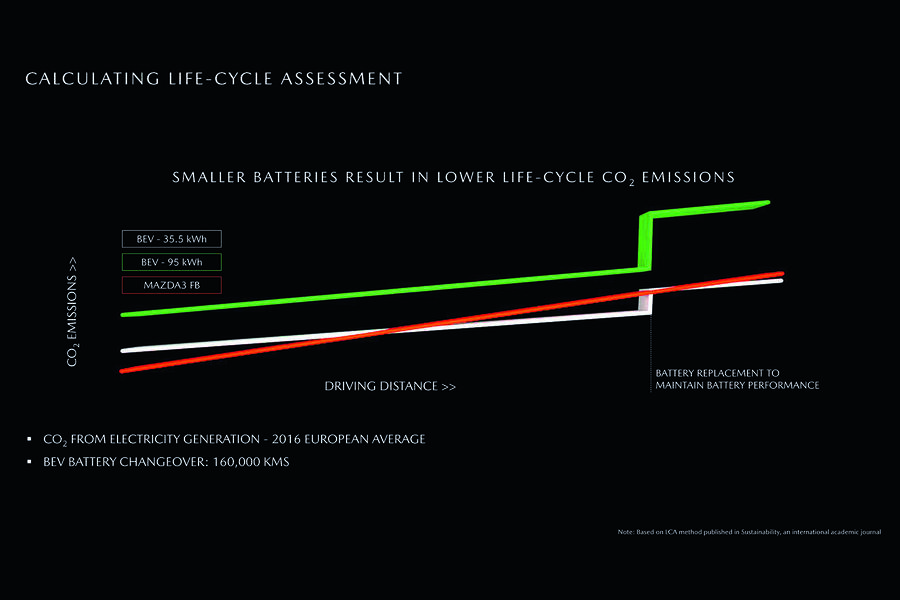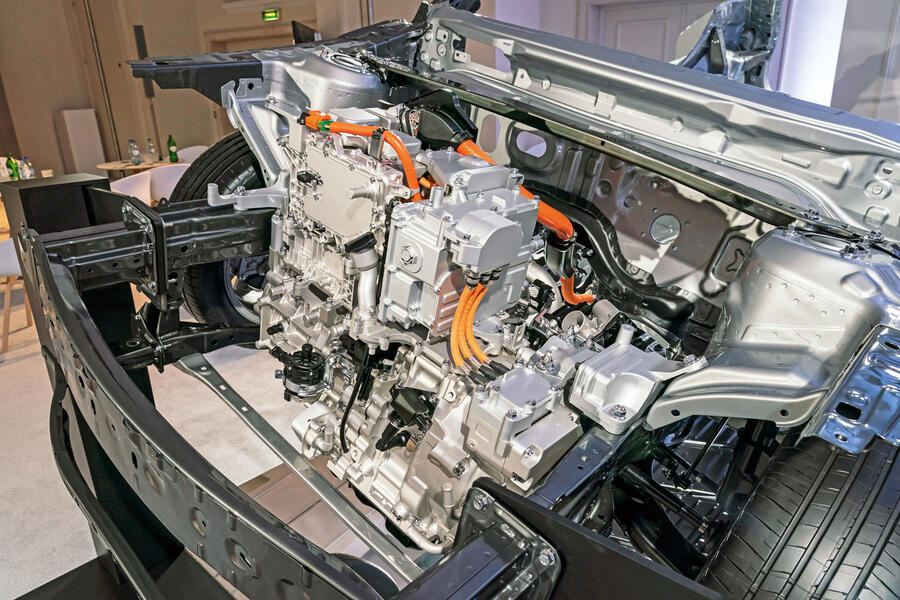
Mazda: ‘Small batteries more eco-friendly than big 95kWh ones’
Mazda says it will never build a ‘big-battery’ electric car, because it believes such vehicles are less environmentally friendly than even conventional diesel-powered models, judged over a whole energy life cycle.
Speaking in Portugal at a prototype test drive of the upcoming MX-30 electric car, Joachim Kunz, head of product development and engineering at Mazda Europe, said the firm has studied the CO2 emissions of building a vehicle ‘from extraction to disposal’.
Citing a study by a Japanese university using the average CO2 output of the European grid, Kunz said an EV with a 95kWh battery has such a disadvantage of embedded CO2 at the point of sale that a new Mazda Skyactiv diesel car will probably be more CO2 efficient across its lifetime, even if the EV’s battery pack is not replaced at 100,000 miles (160,934 km).

Kunz said Mazda has calculated that an EV with a 35kWh battery makes more sense environmentally because, by around 50,000 miles (80,467 km), such an EV starts to show lifetime CO2 savings over a diesel Mazda.
The 3-based Mazda CX-30 is the first SUV based on the Japanese brand’s latest hardware
Another claimed advantage of the MX-30 concept is that it has more range per kWh of battery than many rivals, thought to be because the smaller battery weighs much less than a larger unit, reducing the amount of energy needed to move the vehicle.
The production version of the MX-30, due in mainland Europe later this year and the UK in early 2021 priced at €34,000 (£30,000/ Rs 28 lakh), will have a 35kWh battery. That will drive an electric motor with 141bhp and 195lb ft (264.4 Nm) of torque and give a range of around 130 miles (209 km). The lithium-ion battery pack is made in Japan by Panasonic.
Most carmakers agree that the average European driver covers around 35 miles per day so Mazda argues that the MX-30 will have enough range for the majority of owners as well as being a genuinely ‘low-CO2’ vehicle across its lifetime.
Kunz told Autocar UK that for longer-distance drivers who want a low-CO2 vehicle, Mazda is currently developing a new range-extender system that uses a compact rotary engine. An early static prototype of such a system was on display at the MX-30 driving event in Portugal.

Kunz said it is too early to reveal any technical details about the future rotary engine. He added that specific future legislation – such as permitted fuel tank size – will guide the power and range of the production version.
However, Autocar UK can reveal that the engine, generator and control electronics fit easily into the right-hand side of the engine bay, which it shares with the electric motor and its control equipment. The engine’s rotor housing is just 75mm deep and the engine uses a single spark plug and is started by the generator.
This is not the first time that the company has experimented with using its signature rotary engine as a range extender. In 2011, Mazda built a prototype 2 range extender that used a small rotary engine mounted under the boot floor.
Mazda’s engineers have also tuned the torque delivery of the MX-30’s electric motor to be less frenetic than is often the case with EVs, reasoning that they want the MX-30 to feel less like a dramatic change from a typical internal combustion engine vehicle.
Ultimately, however, the Japanese brand is showing some bravery in disputing the prevailing wisdom around battery-electric vehicles, by insisting that a modest 35kWh unit is as ‘green’ as a vehicle battery is likely to be.












